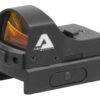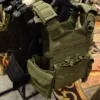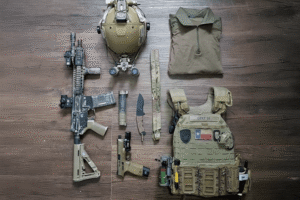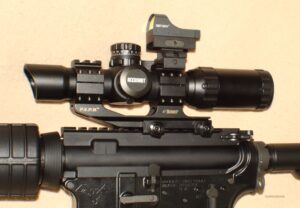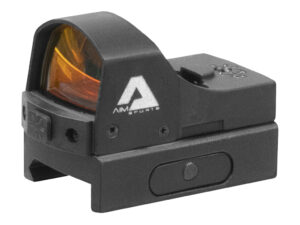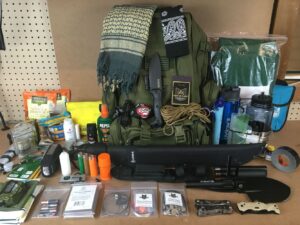
Practical, up-to-date guide to building a reliable family emergency kit from gear you can buy at a tactical gear store.
When an emergency happens—power outage, flood, earthquake, civil disruption, or an unexpected overnight evacuation—the difference between chaos and calm is preparation. A family survival pack (also called a “go bag” or “bug-out bag”) should be compact, reliable and easy for everyone to use. Tactical gear stores sell rugged, field-tested equipment that fits the job: durable backpacks, reliable lighting, water treatment, first-aid tools and clever accessories that keep your family safe and functioning.
This guide will walk you through exactly what to buy, why it matters, how to pack efficiently, and how to tailor the kit to your family’s needs. Everything here focuses on legal, non-lethal and practical items you can find at most reputable tactical gear stores.
1. Decide the role of your family survival pack
Before buying anything, be clear about the pack’s purpose. Typical roles include:
- Emergency evacuation (72-hour pack): Grab-and-go kit for leaving home quickly for 1–3 days.
- Shelter-in-place kit: Tools and supplies to ride out a short-term local emergency at home (power loss, storm).
- Car kit: A slightly different set that stays in your vehicle for roadside incidents or driving evacuations.
Build one primary family pack (stored near your main exit) and smaller individual packs for each capable family member or a child’s comfort pack.
2. Choose the right backpack (the foundation)
A solid backpack is the backbone of any survival pack. At a tactical gear store, look for:
- Capacity: 30–45L for a single person 72-hour pack; 60–90L can work for a shared family pack.
- Durability: Cardura or ripstop fabrics, reinforced stitching, water-resistant coatings.
- Comfort: Padded shoulder straps, ventilated back panel, and a supportive hip belt for heavy loads.
- Organization: Multiple compartments and MOLLE/webbing for attaching pouches and accessories.
Recommendation: pick a reliable tactical backpack from the store labelled for “assault” or “tactical daypack” use—they are built to carry weight comfortably and withstand rough handling.
3. Core categories: what every family pack needs
Below are core categories with specific items you can readily source from a tactical gear store. For each item I explain the purpose and practical tips.
Shelter & Warmth
- Emergency shelter / lightweight tent or tarp: Compact tarps or emergency bivvies provide shelter if you must sleep outdoors.
- Mylar thermal blankets (space blankets): Extremely compact and reflective—one per person.
- Insulated sleeping pads / compact sleeping bag: Choose seasonally appropriate bags—3-season is practical for most climates.
- Extra clothing: Pack moisture-wicking base layers, an insulating mid-layer, and a waterproof outer shell for each person. Tactical clothing brands typically offer durable, quick-dry garments that compress well.
Water & Hydration
- Water bottles / bladders: Durable bottles or hydration bladders for easy drinking on the move.
- Portable water filter: Gravity or pump filters handle natural water sources; look for 0.1–0.2 micron filters.
- Water purification tablets / drops: Backup method if filters fail—shelf-stable and ultra-light.
Food & Cooking
- High-calorie ration bars / ready-to-eat meals: Aim for 2,000–3,000 calories per person per day divided into compact rations.
- Compact stove & fuel (if you can use it safely): A small canister stove or alcohol stove and a lightweight pot can make hot meals.
- Utensils and lightweight cookware: Titanium or aluminum camping cups and folding stove sets.
Light & Power
- Tactical flashlight & headlamp: A headlamp for hands-free tasks and a compact tactical flashlight for distance. Choose rechargeable units and carry a spare battery.
- Power bank / solar charger: High-capacity power banks to charge phones; a small foldable solar panel can top them off if you’re outdoors long-term.
First Aid & Health
- Comprehensive first-aid kit: Bandages, dressings, antiseptic, triangle bandage, tweezers, tape and a tourniquet for severe bleeding (and someone who knows how to use it).
- Personal medications: At least a week’s supply and copies of prescriptions.
- Sanitation supplies: Wet wipes, hand sanitizer, small trowel, and zip bags for waste.
Tools & Multipurpose Gear
- Multitool: Pliers, knife, screwdriver—one of the most useful items for repairs.
- Fixed-blade knife or utility knife: For cutting cordage, preparing food, or shelter work. Tactical stores offer robust models.
- Paracord (50–100 ft): Versatile for shelter, repairs, and rigging.
- Folding saw or compact axe (optional): Useful in woodier environments but heavy—balance need vs weight.
- Duct tape & repair kit: Wrap some on a stick for compact storage.
Navigation & Communication
- Paper map & compass: Don’t rely solely on electronics; include local maps and a basic compass.
- Battery-powered or crank radio: For emergency broadcasts if mobile networks go down.
- Whistle & signal mirror: For attracting attention.
- Two-way radios (family use): For short-range comms if cell coverage is absent.
Safety & Legal Items
- Personal alarm: Loud keychain alarm to deter threats and attract help.
- Work gloves: Protect hands during cleanup or manual tasks—look for durable tactical gloves.
- Face masks / N95 respirators: For smoke, dust or debris in certain situations.
- Lightweight first-aid guide and safety notes: Keep simple instructions for non-medics.
4. Tailoring for family size and special needs
- Children: Add comfort items (small blanket, favorite toy), child-sized clothing, baby formula or diapers as applicable.
- Elderly / mobility-impaired: Consider medication management, mobility aids, and extra water/food.
- Pets: Pet food, collapsible bowls, leashes, and vaccination records in a waterproof bag.
- Medical conditions: Extra supplies for diabetes, asthma (inhalers), or other chronic needs.
Quantity rule-of-thumb: plan 3 days (72 hours) minimum: 3 liters water per person per day, 2,000–3,000 calories per person per day, and appropriate medication supply.
5. Smart packing: organize for speed and access
A tactical gear store offers pouches and organizers that make packing efficient.
- Use internal compartments: Keep water and heavy items low and close to your back.
- Quick-access pouch: Place essential items (first aid, phone, flashlight, whistle) at the top or in an outside pocket for fast retrieval.
- Modular pouches: Use small MOLLE pouches for medicines, tools, and hygiene supplies so you can reconfigure packs quickly.
- Label contents: Use waterproof markers or small tags inside pouches so anyone can find items fast.
Packing order example: sleeping system (bottom), clothes and food (middle), water and stove (side pockets), first-aid and documents (top), quick-access pouch (outside).
6. Buying smart at a tactical gear store
To choose the right products without overspending:
- Prioritize durability over gimmicks. Invest in a good backpack, reliable water filter and a durable flashlight before luxuries.
- Buy multi-use items. A multitool, paracord, and a sturdy tarp cover many needs.
- Check reviews and vendor reputation. Reputable tactical gear stores often stock tested brands and provide warranties.
- Avoid unnecessary heavy combat gear. Plate carriers, ballistic plates, or weapons are not appropriate for most family survival packs and are often restricted—stick with practical, legal tools.
- Ask for hands-on demo. A staff member can show how backpacks fit or how a stove works; sizing matters.
7. Maintenance and rotation: keep the pack reliable
A pack isn’t useful if its supplies are expired or batteries are dead.
- Monthly check: Inspect batteries, seals, and perishable items.
- Quarterly rotation: Replace water, battery backups and any food that is nearing expiry.
- Annual review: Update clothing sizes, medications, and contact info.
- Drills and familiarization: Practice using the pack—have a family drill to grab packs and move to a meeting point so everyone knows the routine.
8. Scenario planning: evacuation vs shelter-in-place
- If evacuating: Grab the primary family pack, wallet, phone, keys and family meeting plan. Put quick shoes on and move to your rendezvous.
- If sheltering: Bring the shelter-in-place kit to your safe room: extra water, blankets, radio, power bank and supplies for comfort. Decide on roles (who watches kids, who preps food) in advance.
9. Legal, cultural and safety notes
- Local laws: Some items (certain defensive devices, tactical knives) may be restricted—always check local regulations before purchase.
- Responsible use: Tactical items are tools; training in first aid, fire safety and map-reading increases their value.
- Avoid panic buying: Focus on essentials—food, water, shelter, communication and basic medical care.
10. A simple 72-hour family pack checklist (printable)
Shelter & Warmth: tarp/tent, thermal blankets, sleeping bags, extra clothes
Water: 3L/person/day x 3 days, water filter, purification tablets, bottles/bladders
Food: calorie-dense rations, ready-to-eat meals, utensils, small stove + fuel
First Aid: comprehensive kit, medications, masks, sanitation supplies
Tools: multitool, fixed knife, paracord, duct tape, repair kit
Light & Power: headlamp, flashlight, spare batteries, power bank, solar charger
Navigation & Comms: map, compass, radio, whistle, two-way radios
Documents & Cash: copies of IDs, insurance, cash in small bills in waterproof bag
Misc: gloves, hygiene kit, baby/pet supplies, local emergency numbers
Final thoughts
A well-planned family survival pack gives you calm, clarity and capability in a stressful moment. Tactical gear stores are an excellent source for rugged, reliable items—backpacks, lights, filters and tools meant for field use. Focus on legal, multi-use and easy-to-operate gear, organize thoughtfully, and practice regularly. With a good family pack and a simple plan, you’ll increase your family’s resilience and readiness for whatever comes your way.
If you’d like, I can build a tailored shopping list from specific tactical gear brands or local stores, or create a printable checklist and labelled packing diagram for your family—tell me how many people are in your household and your local climate, and I’ll customize it.


